Este post também está disponível em:
Português
English
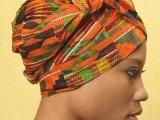
The turban for many is a symbol of black culture and beauty, but this accessory, full of meanings and functions, is also used by people from the East.
The turban is for many a symbol of black culture and beauty, but besides Africa other peoples and cultures also use this accessory full of meanings and functions. For us it is not only beautiful and practical but also synonymous with attitude.
We went to research the history of the turban and found many things! Thinking of improving your reading, we divided this post into two: East; Africa, Brazil and Fashion. Today you read one part and on Saturday the other. We hope you enjoy and get inspired by the beauty of the turban.
Part I: Turban in the East
Where and when it appeared is not known for sure, but it is known that it existed before the year 570DC, that is, before the birth of Muhammad and the Islamic faith. And the turban has an important religious function. It is a material symbol that reinforces spiritual awareness, a boundary between faith and disbelief.
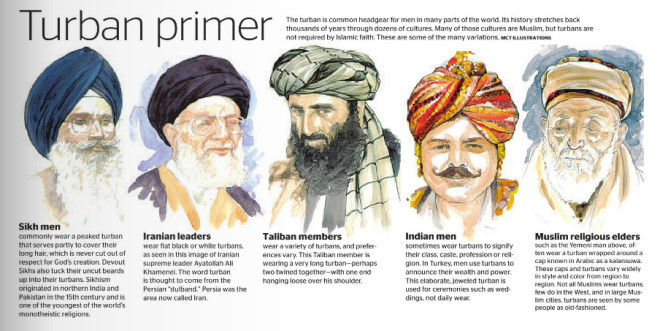
Since it is in the head that decisions between good and evil, right and wrong, true and false take place, it is the head that supports the choice of faith. It is as if the kawrah (turban) envelops and protects the thoughts.
It is worn only by men and today this type of turban and its use is associated with terrorist attacks, unfortunately.
However, the turban is also the main symbol of the Sikh faith, an Indian monotheistic religion. In it, men and women should not cut their hair but use turbans to wrap them.
And on World Turban Day (April 13) Sikh men display their exuberant turbans with pride and as an example to new generations so that the habit and religion are not lost.
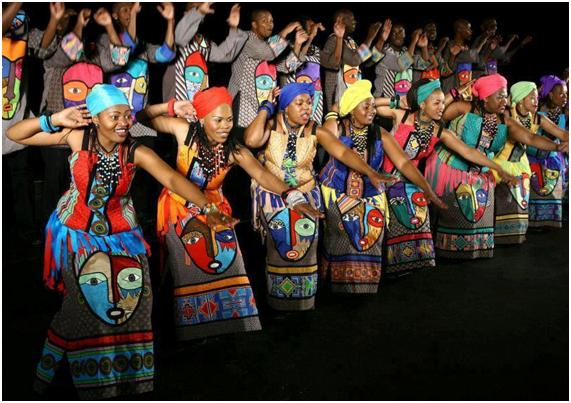

História do Turbante
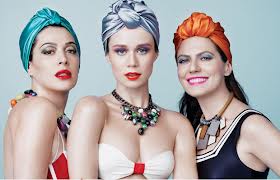
Aprenda a fazer um Turbante
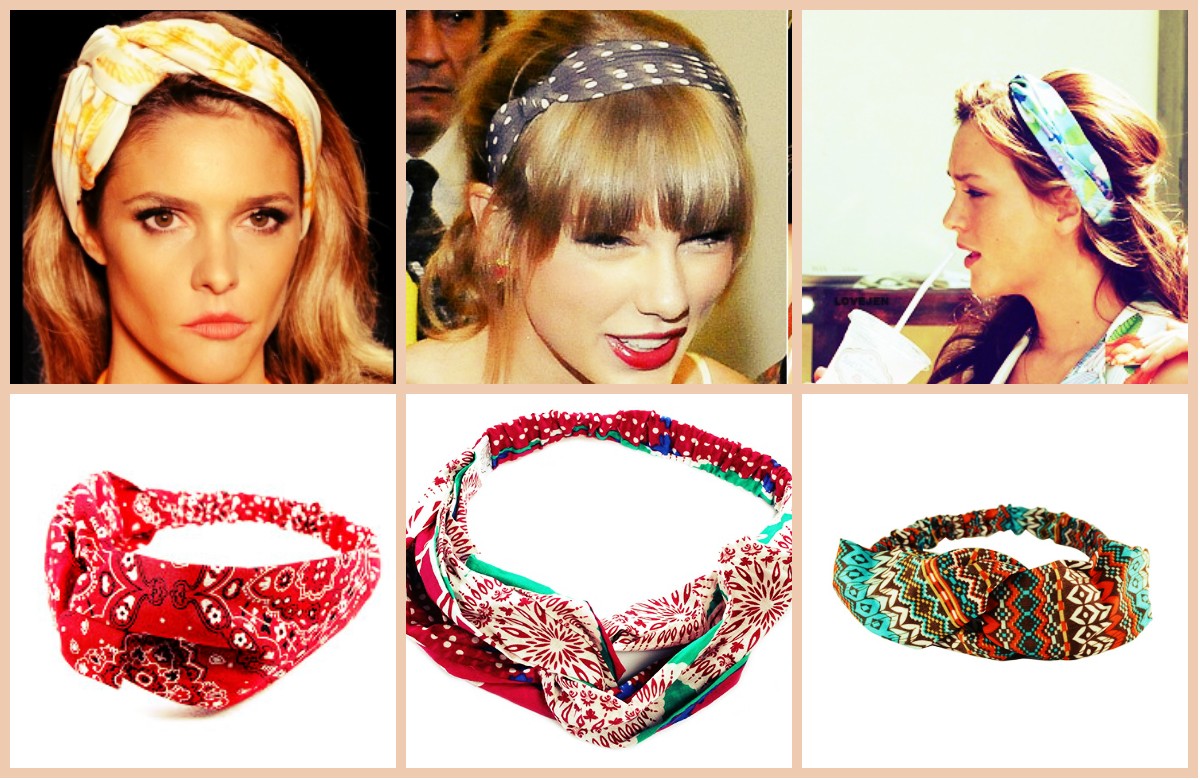
Como fazer Turbantes
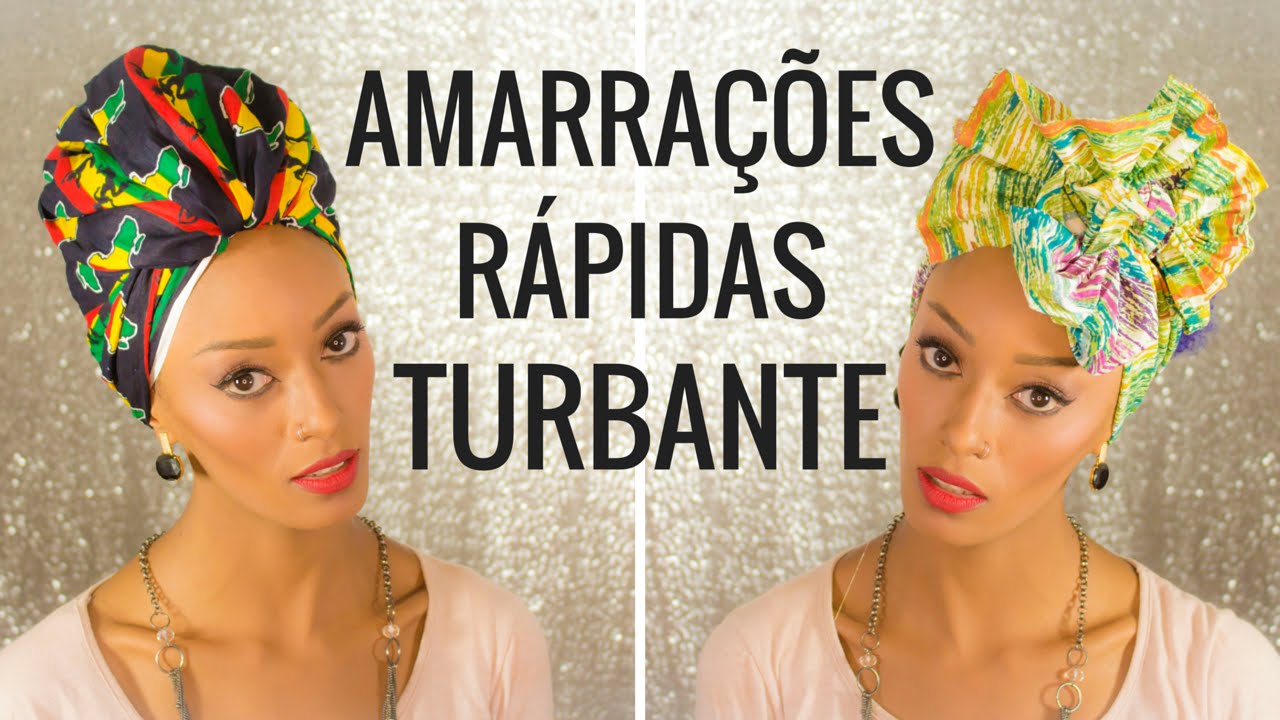
Como amarrar rápido um Turbante
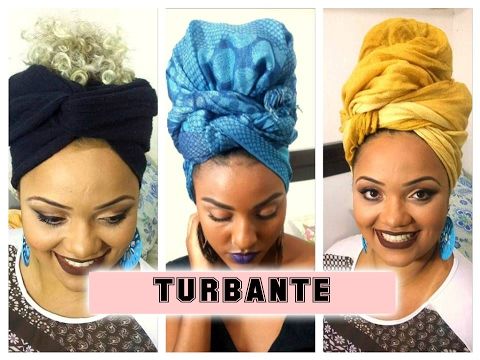
6 amarrações de Turbante
Still in India turbans are worn to protect the head from the harsh desert climate, represent without any words the wearer’s caste, financial status and religion. It is said that in Rajasthan, India’s largest state, every 12 km the dialect and styles of turbans change! Wow!
The main types of turbans
They are the Safa, a strip of fabric about 9m long and 1m wide, and the Pagdi, which is about 1.50m by 1m wide.
Culturally there, taking off a turban and placing it on someone’s feet is a sign of submission and by exchanging it with someone you are cementing bonds of brotherhood.
So important, in the city of Jaipur, there is the turban museum and many tourists go there to buy an original.
The kings used it in the past and the maharajas also dictated the fashion to the population. Today it continues to be used and is an indispensable item in wedding ceremonies being worn by the groom.
The turban is part of Eastern, African and Brazilian culture, as well as appearing in fashion shows. Learn, use and abuse this super stylish accessory.
Much more than a simple piece of cloth, the turban has a rich history! In addition to the peoples of the East, it is also part of African and Brazilian culture and appears in fashion shows.
Continuing our research on it (see part I of this post), today we have a little more of this subtle communication tool, this secular garment, this practical, modern, cool, glamorous, simple, chic and etc … accessory.
Part II: Turban in Africa, Brazil and Fashion
In Africa, fabrics wrapped around the body are part of the culture and turbans are part of this garment complementing the set. They are used by men and women and in Black Africa, the so-called gelê turbans have social, religious functions and of course, are part of fashion.
Learn how to make a turban to decorate yourself at carnival
There is also what can be used as a turban wrapped around the head, wrapped around the waist of women or supporting children on the mother’s back and that in African religions besides turban, can be used around the bust and ending in a bow (in the clothes of some Orixás), tied with a big bow around the atabaques in important ceremonies, tied to the trunk of a sacred tree (its color may vary according to the Orixá).
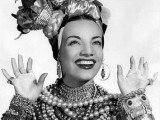
The turban, ojá or torço arrived in Brazil, given the African influence, here it is a blanket that is wrapped around the head and that makes up the costume of the baianas, one of the main typical figures of the country, hardworking women who regularized their profession.
In addition, as in Africa it also has a religious function, being used in candomblê, umbanda, xangô of the northeast with the same purposes, varying the number of flaps according to the Orixá. It represents seniority and respect and serves as protection for the children of saints, especially for women.
In fashion, in 1930 the French stylist Paul Poiret, inspired by oriental clothing and exotic costumes, introduced the accessory in haute couture making the head of several sophisticated women and artists, among them Simone de Beavouir and Greta Garbo. Soon after, it was Carmen Miranda’s turn to popularize the accessory in Brazil.
Practical, during the Second World War, many women used the turban to hide the mistreatment of the hair.
In the 1960s, the black pride movement that originated in the United States made the use of the turban return to the scene as a form of affirmation for black people.
Recently it has appeared in fashion shows of famous brands such as Prada and has become fashionable again in the West.
Costume and the Turban of Bahia
In Bahia de Todos Os Deus, with their pompous costumes, turbans (twists), coastal cloths, batas (long and loose blouse), round skirts (white or colorful print) with many lacy and starched petticoats, bracelets and necklaces in the color of their orixá, the black women of gain created a physical type that became traditional.
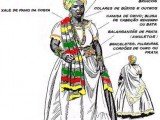
The costume that we usually call baiano reflects the influence of African culture in Brazil combined with the twist and the ginga of the body. The turban and the balangandans indicate elements of the Islamic culture predominant in North Africa (Sudan).
Balangandãs were part of the traditional clothing of black mucamas in the 18th and 19th centuries. Balangandã is the ornament of colored beads or amulet, in the form of a figurine, fruit, medal, coin, key or animal tooth; ring pendant, brooch, earrings or silver bracelet, worn by the baianas on festive days.
Figs, teeth and guides are used as amulets for protection, praise or to fight the evil eye. The fig, in particular, is an amulet in the shape of a closed hand, with the thumb between the index and big finger, used as a personal ornament, of the house or commercial establishment.
In Africa, the cloth of the coast was only a complement to the clothing of black women, and had no religious connotations. From the 19th century, in Brazil, it began to be linked to the celebrations of Candomblé.
In Africa, it is called alaká or alaká cloth. In Brazil, it became known as pano da costa because it came from the Ivory Coast (Africa) and also because it was worn on the back.
The first panos da costa came on the bodies of female slaves, who had no clothes and were sold wrapped in the cloth. Later, the cloths were woven right here by slaves or their descendants on rustic handlooms that came to Brazil in the 18th century.
Woven on a handloom, the pano da costa is made up of strips two meters long each, ranging in width from 10 to 15 centimeters. The strips are then sewn together.
White is not the predominant color in the pano da costa, which is usually striped or embroidered in high relief and colored with varied patterns depending on the orixá of each nation.
The children of saints wear the alaká wrapped around the trunk. Slave mothers carried their babies on their backs (with their legs around the waist) and secured by an alaká during working hours.
The “baianas” today, descendants of Africans (from the Yoruba, Nagô, Minas, Fula, Haussá tribes) are the ones who are most careful in their dress.
The Nagô women, whose presence is greater in candomblés, are short and fat. They wear bright, garish colors. Wide skirts all printed.
The Baiana-Mulçuman (from Sudan in Africa), tall and slender, wears the immaculate white costume. Sometimes on the shoulder a rustic “pano da Costa”.
And today, as a typical costume and figure of Bahia, so sung by Dorival Caymmi, we can see the baiana pregoeira with her colorful trays of typical foods and sweets, in the streets, hillsides and beaches of Salvador, or in Candomblé and Umbanda rites and religious festivals, such as the Lavagem do Bonfim.
In Salvador, on November 25, when the Dia da Baiana is celebrated, a mass is celebrated in the Igeja de N. Sra. do Rosário dos Pretos and cultural manifestations such as: Samba de Roda, Capoeira, Olodum and Afoxé, at the Memorial das Baianas.
The baiana is a figure that brings with it the links of African ancestral heritage – orality, cuisine, belief, mysticism, dance, ginga and, above all, color. You have to have ancestral blood to know what the baiana has.
Turban is history, religion, fashion and culture.
Tourism and Travel Guide of the Northeast, Bahia and Salvador



















